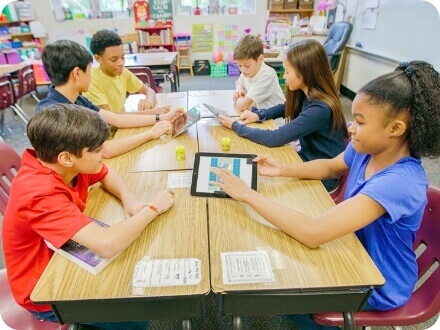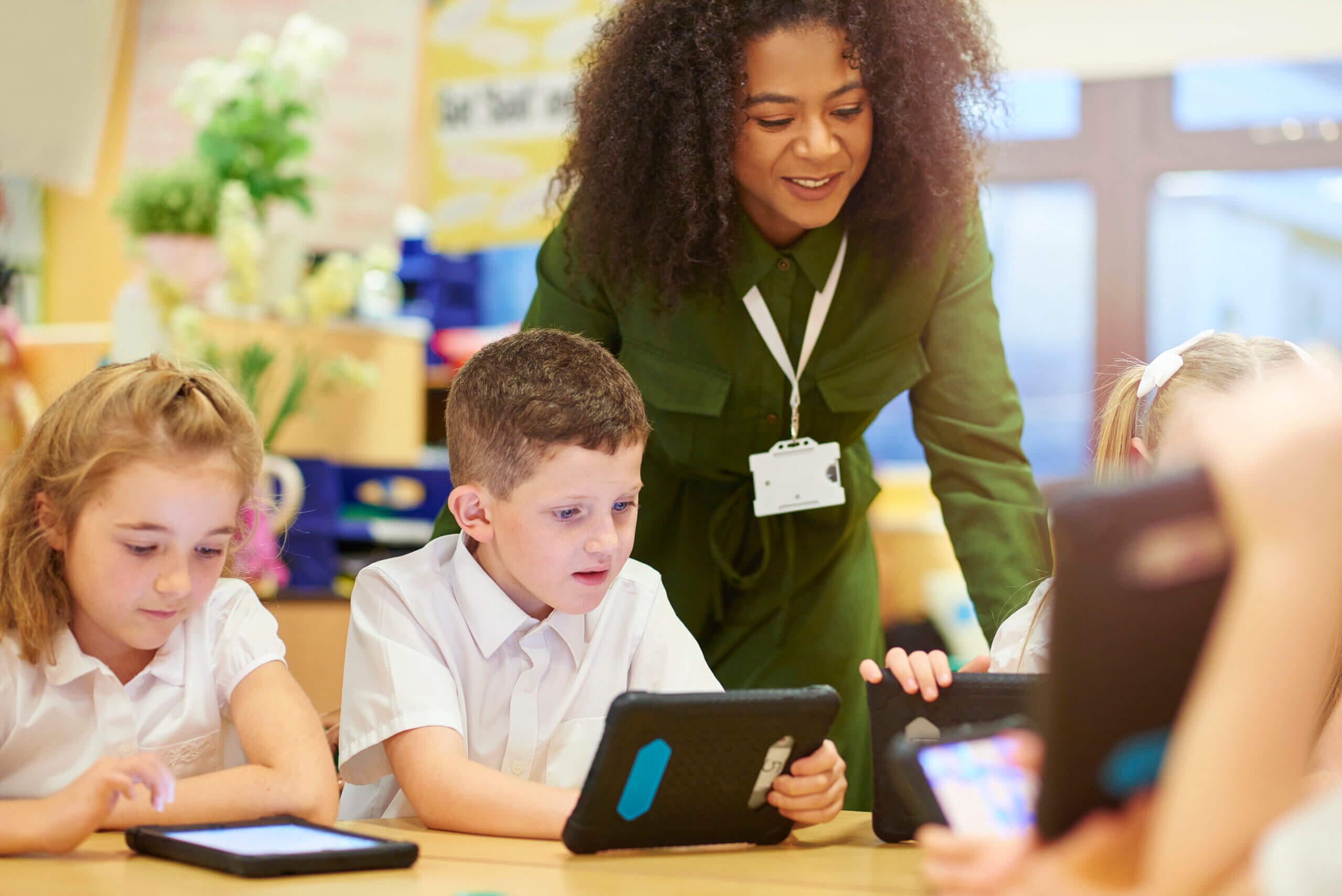
A Social-Emotional
Learning Strategy
Schools have typically focused on achievement, but social-emotional learning (SEL) now ranks as their top priority, according to the State of Technology in Education Report 2021/22.
Throughout the recent shifts in schooling, educators have been on the frontline of students’ welfare and emotional stability, and have acknowledged how teaching has become about more than providing an education. It’s also imperative that students develop interpersonal skills that make them more effective classroom participants and better equipped to manage unexpected or ongoing stresses.
Student wellbeing has always been a priority for educators. Now they need to embed it within a deeper strategy to address students’ holistic needs. A social-emotional learning strategy isn’t a short-term response to change and uncertainty, but rather offers long-term rewards for learning outcomes. So how can educators teach social-emotional learning, and what benefits can it achieve?
What is social-emotional learning?
There is an important difference between student wellbeing and social-emotional learning. Student wellbeing concerns mental health factors like stress, mood and self-esteem. Social-emotional learning refers to the interpersonal skills we use to interact with one another. By embedding social-emotional strategy within the overall pedagogy, educators address students’ holistic needs, encouraging them to learn about themselves and their relationships with others both inside and out of the classroom.
An effective approach to social-emotional learning includes five core competencies:
- Self-awareness
- Self-management
- Social awareness
- Relationship skills
- Responsible decision-making
These competencies represent the balance of the individual student needs alongside their ability to socialise and work with peers. With so many additional strategic considerations to manage, educators are looking for clear ways to convert these broad-level focuses into specific classroom practices. So how can educators incorporate social-emotional learning into their pedagogy?

Differentiated learning for self-awareness and mindfulness

To address unique student needs, education has moved away from identical styles of lesson delivery. Likewise, social-emotional learning aims to instill awareness of individual needs in the students themselves, empowering them to play to their strengths and take ownership of their learning. Through differentiated learning – one of the biggest trends in education – teachers provide awareness of personal preferences and learning styles, often defined by the VARK model:
- Visual
- Auditory
- Reading and writing
- Kinaesthetic
Once established in an academic context, students can apply this self-awareness to their interaction with the wider world. These concrete skills provide a reliable structure to proactively process information and respond when confronted with new or unfamiliar scenarios.
Self-awareness is about more than just the optimal mode of learning – it also relates to the classroom setting. Some questions for students to encourage learning self-awareness include:
- Do you prefer learning as a group or as an individual?
- Do you prefer a busier or quieter environment?
- Do you prefer a faster or slower pace?
- Do you prefer sitting at a desk or in a more open environment?
- Do you prefer taking a leading role or staying out of the foreground?
Most students enjoy a balance, so educators should try to understand when particular setups work best. This helps them become more aware of sensitivities, so they can anticipate and navigate triggering situations. By identifying indicators and predictors, students learn that their emotions and anxieties are something they can control, giving them greater confidence and maturity.
As well as this awareness and mindfulness at an individual level, how can educators help students foster these skills and understanding towards peers and those around them?
Social awareness and emotional intelligence
Whereas self-awareness and mindfulness concentrate on students’ internal experience, social awareness and emotional intelligence are skills for participating in the external world. They help students to be sensitive and supportive of others. They gain an understanding of how behaviours are received, how to interact positively with others, and how to perceive when conflict may arise or a peer might be struggling.
Emotional intelligence is valuable for education as it promotes a more positive, cohesive classroom dynamic. It also improves the quality of student-to-student and student-to-teacher interaction by respecting each other’s personal, human needs. This prepares students to establish stronger future relationships with a variety of other people, including colleagues, family, friends, and partners.
Educators can support emotional intelligence through scenario-based activities. These present students with real-life questions around how to read social signals and act in social situations. Certain subjects lend themselves naturally to teaching emotional intelligence. For example, English teachers leading students in a discussion about a piece of literature can ask what they notice about the feelings and thought processes of characters. Applying a real-world context to subject content reminds students of their place in the wider world. There are edtech tools designed to develop students’ social awareness and ability to gauge social cues – find out the top 5 apps for social-emotional learning.
Indeed, this level of reflection is a primary method of delivering a social-emotional strategy. So, what’s the best way to nurture reflective learning?
Reflective learning
For students to ingrain social-emotional learning skills into their thinking, they need time to reflect. A regular rhythm of reflective learning throughout teaching cultivates a growth mindset. Through reflection, students refocus their composure, improve concentration and content retention, and gain a more balanced perspective on difficulties and achievements. Through edtech quizzes, polls and formative assessments, students receive a concrete benchmark to reflect on, directing their critical thinking skills, promoting a healthy narrative of progress, and informing future decision-making.
Reflective learning also encourages empathy by considering how social factors and lived experience affect their student experience. How else can educators create a sense of classroom community?

Collaboration and classroom community
After periods of isolation and individual learning, classroom community has never been more important. Collaborative learning not only improves learning outcomes and re-energises students with learning fatigue, but it also builds relationship skills students need for their current and adult life. Working together deepens connections between peers, teaching students to communicate, support and understand one another. Educators can give students an appreciation of compromise and tolerance by grouping together students with differing personalities or those who might not necessarily choose to work together.
Edtech also helps build a deeper understanding of different cultures and communities and can create a sense of belonging within a wider global society by providing connections with classes across the world through global live streaming. Digital technologies prepare students to socialise in the digital world, familiarising themselves with the features of online conversation and how to collaborate without the face-to-face, in-person dynamic.
Collaboration and classroom community can reinvigorate students after learning fatigue has offset much of their motivation. It can strengthen bonds between students and with their teachers, giving them more respect for and fulfilment from the classroom experience. With this foundation in place, they’ll be more resilient to disruptive or stressful periods, relying on the security and support of their peers and teachers. But what are the other rewards of social-emotional learning, in addition to student engagement and relationships?
The benefits of social-emotional learning
As much as social-emotional learning is centred upon students’ needs beyond the classroom setting, it can enhance and enrich their educational experience.
For student engagement, it alleviates many of the emotional distractions and personal anxieties that take a toll throughout the school day, improving their focus and mental acuity. By empowering students to self-manage emotions and moods, stress levels decrease. A better handle on emotional management and regulating mood is linked to lower distress. Students are likely to become more active classroom participants with greater confidence driven by self-acceptance, emotional intelligence and social awareness of how to communicate with their peers, while being less inhibited by insecurities.
In terms of student satisfaction, improved social awareness, emotional intelligence and classroom relationships lead to more respect for the teacher’s authority and mentorship. Students will recognise the value of these relationships and how to sustain them in the most healthy and productive way. Countering the criticism of schools perceived as “exam factories,” students will be more gratified by being treated as human beings with emotional needs they feel are attended to.
Research backs all of this up. A study by the Collaborative for Academic, Social, and Emotional Learning (CASEL) highlights two core benefits:
- More than a quarter of students improved their academic performance.
- A quarter of students showed improved classroom conduct; an increased ability to manage stress and depression; and better attitudes about themselves, others and school.
In the long term, social-emotional competencies create a valuable, versatile and highly sought vocational skillset that sets students apart for employability in the future workforce.
As the blended learning environment becomes the common norm of the classroom, it’s important for teachers to know how to provide this learning in all settings – online, in person and hybrid.
Next, find out more about how to deliver social-emotional learning in a digital world.

